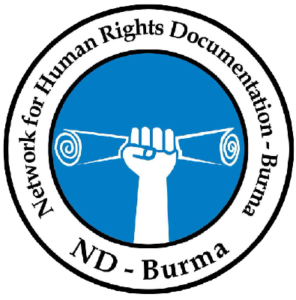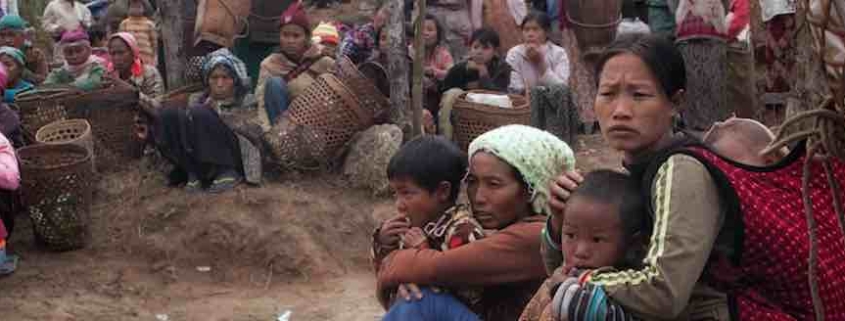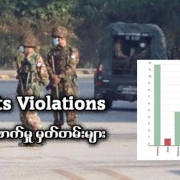Sex-based violence against women and girls in Myanmar
NGO Human Rights Myanmar says Myanmar’s military systematically uses sex-based violence to subjugate women and girls, intensifying since the 2021 coup, according to a report released on 5 May.
At least 380 women have been intentionally targeted and killed, some burned alive or executed in custody, while over 500 have faced sexual violence, including rape. This deliberate strategy, rooted in patriarchy and militarisation, aims to silence dissent and erase women from public life.
The NGO’s report demands international accountability, survivor protection, and action against these potential crimes against humanity.
The following are the key points:
In Myanmar, violence against women and girls is deeply entrenched in patriarchal norms and has been exacerbated by the military coup. Since 2021, women and girls have faced extrajudicial killings, arbitrary detentions, sexual violence, and torture. These acts are not incidental but represent a deliberate strategy to reinforce male dominance, silence dissent, and instill fear.
Targeted killings of women
In addition to the hundreds of women killed by indiscriminate artillery and airstrikes against civilian areas, at least 380 women and girls have been specifically targeted and unlawfully killed by the military.[1] Of these, at least 216 were shot, including 50 who were summarily executed. The targeting of women for execution constitutes a grave violation of Article 6 of the International Covenant on Civil and Political Rights (ICCPR), which enshrines the right to life.
At least 119 of the 380 women specifically killed were held in custody by the military at the time of their deaths, including 28 who were shot. The deprivation of liberty without due process, combined with summary executions of detainees, amounts to enforced disappearances and extrajudicial killings. These acts violate the prohibition against arbitrary deprivation of life under international law and reflect a broader pattern of targeted violence against women as a means of punishment and control. The military’s systematic impunity for these killings further entrenches structural discrimination against women and girls.
Sex-based factors in killings
Among the most egregious acts of violence, at least 71 women and girls were killed by being set on fire. This method of execution is particularly significant in the context of sex-based violence. Burning is not merely a form of execution; it is an act that seeks to dehumanise and obliterate women’s identity and is often used to conceal evidence of sexual violence. The mutilation and destruction of women’s bodies serve to erase evidence of sexual crimes and further terrorise affected communities.
Similarly, at least one woman has been killed by the military through beheading, a method of execution that carries profound symbolic significance. Historically, beheading has been associated with the suppression of female agency and the enforcement of patriarchal control. It represents an attempt to silence women physically and symbolically, reinforcing the idea that those who challenge traditional power structures or assume leadership roles must be eliminated in a demonstrative manner.
Sexual violence and rape
Beyond the methods of killing, some of the 380 women and girls were subjected to sexual violence, including rape, before their deaths. Sexual violence is one of the most direct and severe forms of sex-based violence, as it specifically targets women and girls based on their sex, reducing them to instruments of subjugation and humiliation. Rape has been systematically used in Myanmar as a weapon of war, an assertion of dominance, and a means of political and ethnic persecution. Sexual violence is often used not only as an attack on individual women but as a strategic tool to break communities and enforce patriarchal hierarchies.
While the full scale of sexual violence remains difficult to determine due to the lack of independent monitoring and the military’s deliberate obstruction of accountability mechanisms, credible information indicates that at least 500 women have been subjected to sexual violence and rape.[2] At least 16 women and girls were raped while in custody before being killed.[3] The true number is likely far higher. The military’s use of detention as a space for sexual violence before execution is a pattern documented in other conflicts and constitutes torture and cruel, inhuman, and degrading treatment. The systematic nature of these violations, combined with their targeting of women and girls based on sex, could amount to crimes against humanity.
Structural aggravating factors
Certain factors exacerbate the nature, likelihood, and impact of sex-based violence against women and girls. Each factor is also increased by intersectional oppression, such as based on ethnicity, socioeconomic status, age, and disability, shaping vulnerabilities to sex-based violence. In Myanmar, three major aggravating factors have intensified since the military takeover in February 2021.
Patriarchy
Deeply entrenched patriarchal norms and values permeate Myanmar’s social, political, economic, educational, cultural, and legal structures, reinforcing gender-based discrimination and worsening sex-based violence against women and girls. Women and girls experience additional layers of exclusion due to their lack of access to power and privilege, rigid sex roles, and systemic discriminatory policies and practices. Ethno-nationalists claim that women are “naturally” weaker. Their autonomy is restricted under the pretence of “protection” by families, communities, and the State. Those who challenge these limitations—through their thoughts, speech, or actions—are accused of threatening Myanmar’s “traditional values,” endorsing “Westernisation,” harbouring hostility toward men, or even suffering from mental instability. The military coup has further entrenched patriarchal control, particularly because the military itself remains an institution dominated by men, with very few women in leadership positions.
Militarisation
Myanmar’s long-standing militarisation has embedded military values, structures, and behaviour across society, governance, the economy, education, and the legal system. This has reinforced patriarchal dominance, prioritised State security over human rights, and normalised the use of force as a means of control. Militarisation increases the risks for women and girls who assert their rights. Any deviation from traditional sex-based roles or any form of expression that challenges male dominance is labelled as “undisciplined” or subversive. In extreme cases, women and girls who assert themselves are depicted as threats to public order, as agents of foreign influence, or as “traitors” to the state. Under this militarised framework, any perceived challenge to the status quo—regardless of its severity—is met with force, whether from State authorities, community actors, or even family members.
Extremism
Religious and ethno-nationalist extremism further exacerbates discrimination against women and girls by justifying their oppression under moral and ideological pretexts. Extreme elements exist within Myanmar’s religious communities, with some groups actively encouraged by the military since the 2021 coup as part of a divide-and-rule strategy aimed at fuelling communal tensions. Extremism serves as an aggravating factor because it provides an ethical and religious rationale for suppressing women’s rights. Women and girls who defy traditional sex-based roles are cast as being “against” religious values. They are portrayed as “bad” wives and mothers, “immoral” daughters and sisters, and as bringing “shame” upon their communities. By disguising sex-based oppression as religious doctrine, extremism legitimises the control, subjugation, and punishment of women and girls, further entrenching patriarchal dominance in Myanmar.





